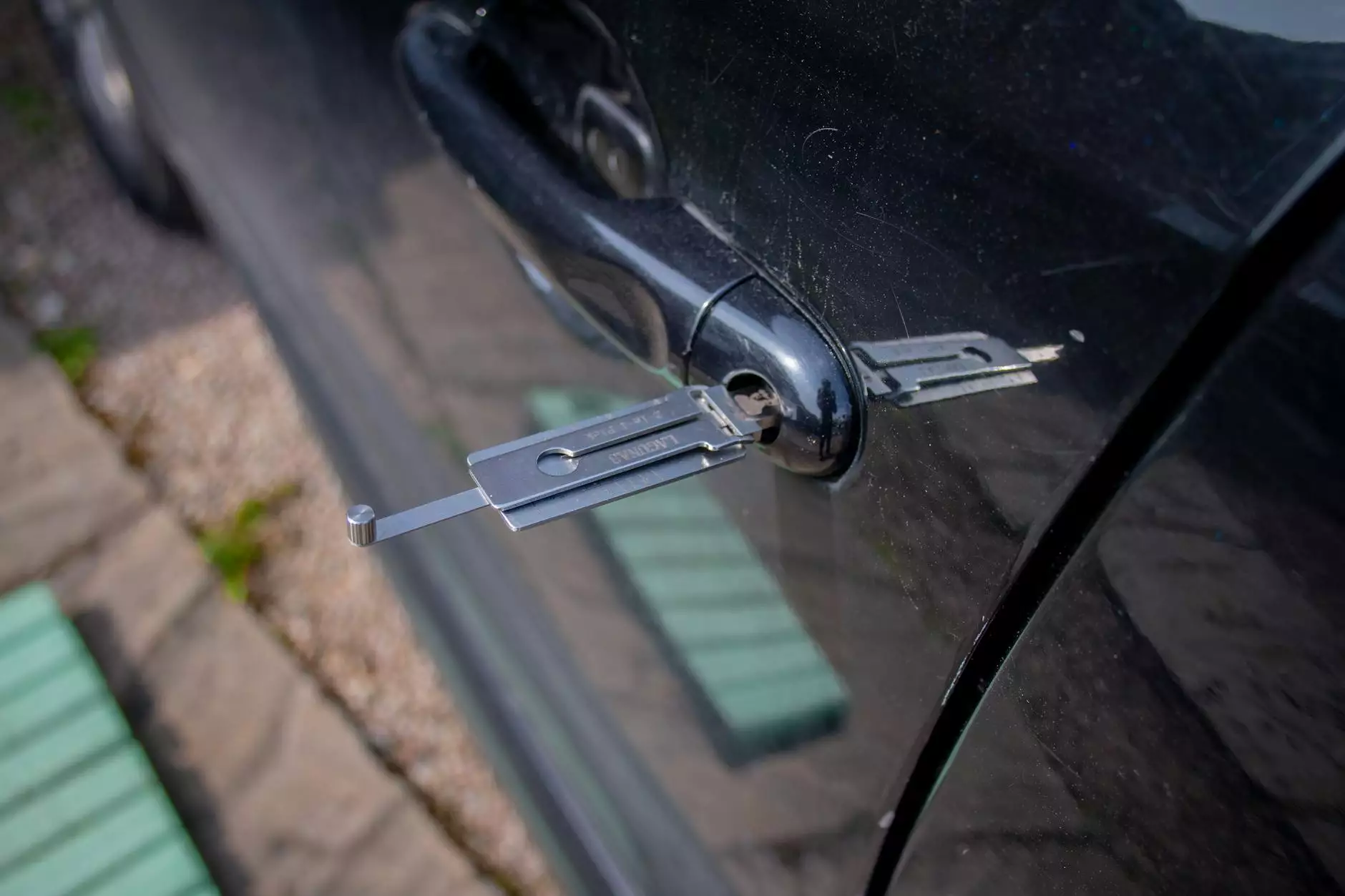Understanding the Door Lock Mechanism: A Comprehensive Guide

The door lock mechanism plays a crucial role in securing our homes, offices, and various establishments. Understanding how these mechanisms function and their complexities can empower consumers to make informed decisions regarding their security needs. In this article, we delve deeply into the specifics of door lock mechanisms, analyzing various types, components, installation processes, and maintenance tips that ensure optimal performance.
What is a Door Lock Mechanism?
A door lock mechanism is the device that allows access to a property while simultaneously preventing unauthorized entry. It consists of various components that interconnect and function together, ensuring the lock's efficacy. This mechanism is an essential aspect of physical security within both residential and commercial spaces.
Types of Door Lock Mechanisms
There are several types of door lock mechanisms available on the market. Each type has unique features, advantages, and disadvantages. Here’s a detailed overview of the most common types:
1. Deadbolt Locks
Deadbolt locks are one of the most secure options available. They use a solid metal bolt that extends deep into the door frame, making it difficult to break open.
- Single Cylinder Deadbolt: Operated by a key on one side and a thumb turn on the other.
- Double Cylinder Deadbolt: Requires a key on both sides, providing additional security but may be less convenient.
- Lockable Thumbturn Deadbolt: Features a thumb turn on the inside but can be locked with a key from the outside.
2. Knob Locks
Knob locks are commonly found in residential settings. They utilize a simple mechanism where the knob turns to retract the latch bolt.
- Advantages: Cost-effective and widely available.
- Disadvantages: Can be easily breached and are best used in conjunction with deadbolts.
3. Lever Handle Locks
Lever handle locks are ergonomic and ideal for accessibility. They are often found in commercial settings.
- Advantages: Easy to use for those with limited mobility.
- Disadvantages: Typically less secure than deadbolt locks.
4. Electronic Locks
Modern electronic locks use keypad or fingerprint technology, eliminating the need for traditional keys.
- Keypad Entry: Allows users to set and change codes for entry.
- Biometric Sensors: Uses fingerprint authentication for personalized access.
5. Smart Locks
Smart locks connect to your smartphone, allowing access control remotely and providing enhanced monitoring.
- Control: Lock and unlock your doors from anywhere.
- Integration: Can be integrated with home automation systems.
Key Components of a Door Lock Mechanism
Understanding the components of a door lock mechanism is essential for anyone interested in installation or maintenance. Here are the key parts:
- Keyway: The opening in the lock where the key is inserted.
- Spring Bolt: A spring-loaded mechanism that retracts when the knob is turned.
- Deadbolt: A solid metal bolt that extends into the frame for security.
- Strike Plate: A plate mounted on the door frame where the bolt engages.
- Cylinder: The component that houses the pin tumbler mechanism.
- Thumb Turn: A mechanism that allows for locking and unlocking from the inside without a key.
How to Install a Door Lock Mechanism
Installing a door lock mechanism can be a straightforward task with the right tools and guidance. Follow these steps to ensure a proper installation:
- Gather Tools: You will need a drill, screwdriver, chisel, measuring tape, and a new lock set.
- Remove the Old Lock: Unscrew the existing lock and detach any components without damaging the door.
- Measure for the New Lock: Ensure the new lock fits properly by measuring the existing holes.
- Install the New Lock: Follow the manufacturer's instructions, inserting the lock assembly into the door, attaching the strike plate, and securing all screws.
- Test the Lock: Ensure the lock operates smoothly by testing the key and any thumb turn.
Maintenance of Door Lock Mechanisms
Regular maintenance is crucial to keep your door lock mechanisms functioning efficiently and to prolong their lifespan. Here are some essential tips:
- Lubricate Regularly: Use silicone spray or graphite powder to lubricate the lock mechanisms. Avoid using oil-based lubricants that can attract dust.
- Inspect for Rust: Examine the exterior and interior parts for rust, especially in humid environments.
- Check the Strike Plate: Ensure the strike plate is secure and aligned with the bolt.
- Test Keys: Regularly check the condition of your keys; worn keys may not operate locks effectively.
- Replace When Necessary: If your lock shows signs of wear or damage, consider replacing it to enhance security.
Common Issues with Door Lock Mechanisms
Understanding common problems that can occur with door lock mechanisms can help homeowners address issues promptly:
- Sticking Locks: This can occur from dirt accumulation or lack of lubrication.
- Key Won’t Turn: This may indicate that the lock is damaged or that the key is worn out.
- Misaligned Strike Plate: If the lock won't engage properly, the strike plate may need adjustment.
- Broken Key Inside the Lock: If this happens, extraction tools may be needed, or a professional may have to assist.
Security Enhancements for Door Lock Mechanisms
Solitude may breed comfort, but security can offer peace of mind. Here are some enhancements you can consider:
- Reinforced Strike Plates: Use heavy-duty strike plates to increase resistance against forced entry.
- Quality Deadbolts: Upgrade to premium quality deadbolts for greater security.
- Security Cameras: Install cameras near entrances for additional surveillance.
- Smart Door Locks: Consider smart locks for enhanced control and monitoring capabilities.
- Alarm Systems: Integrate your locks with an alarm system for increased deterrence against break-ins.
Conclusion
Understanding the door lock mechanism is essential for ensuring the security of your property. Whether you're seeking to install a new lock, maintain your existing one, or enhance your security measures, having comprehensive knowledge will ensure you make the best choices. At Kaukaban.com, we offer a range of services and products related to Keys & Locksmiths and Hardware Stores to meet all your locking needs. Secure your home or business today by taking proactive steps in understanding and managing your door lock mechanisms.









